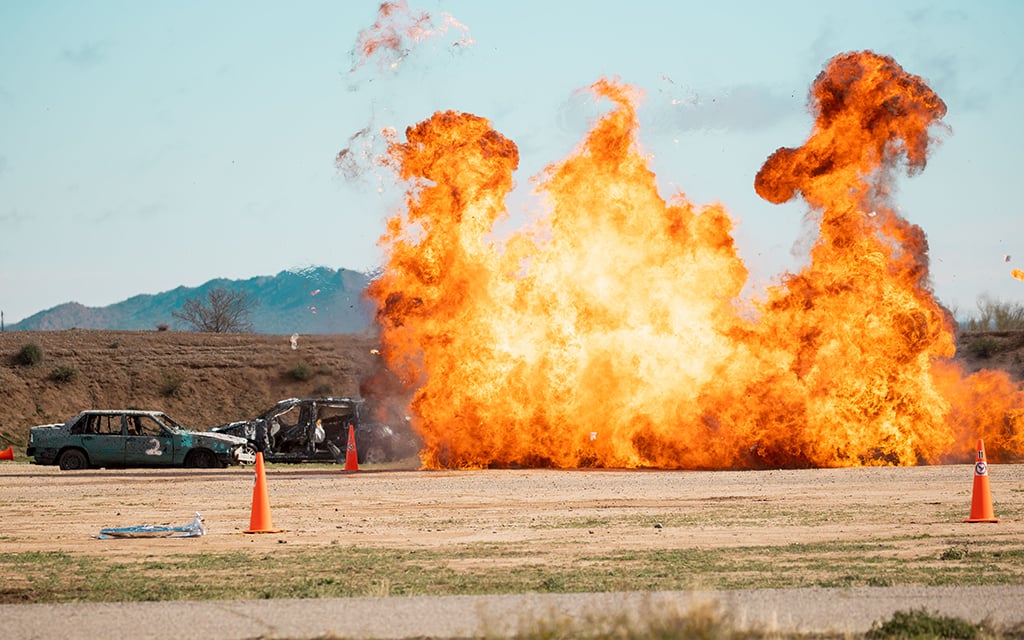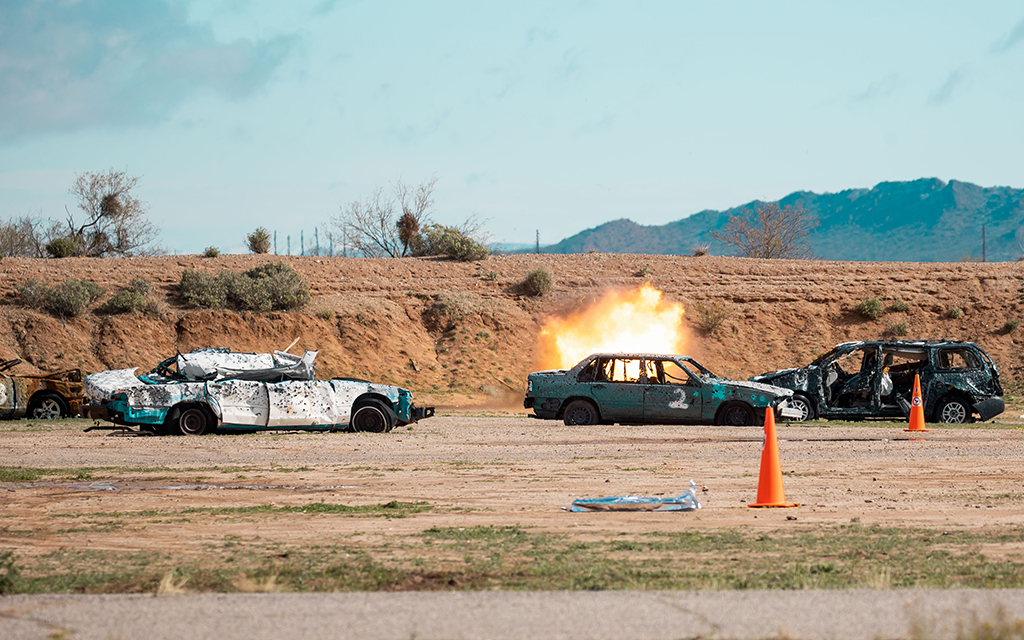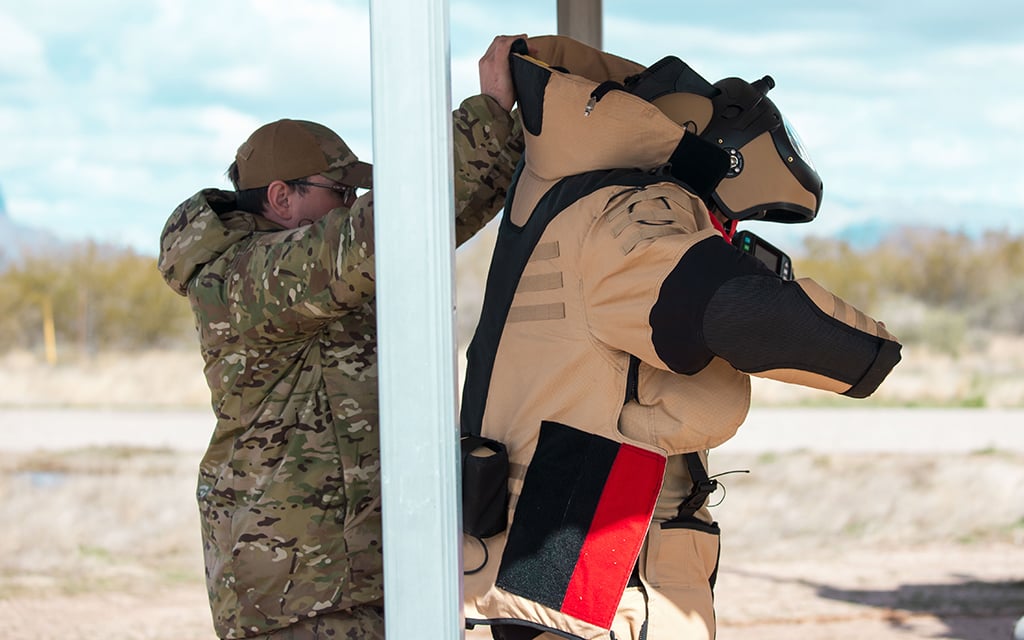
Raven’s Challenge subject matter expert David Bebout (not pictured) demonstrates a type of explosion commonly used in Hollywood films at Pinal County Airpark on March 2, 2023. Three pounds of explosive make up the charge. (Photo by Jack Wu/Cronkite News)

A one-pound explosive is discharged in front of a demonstration group during Raven’s Challenge at Pinal County Airpark on March 2, 2023. (Photo by Jack Wu/Cronkite News)

Jack Smith, left, explosive ordnance disposal staff sergeant, dresses explosive ordnance disposal tech Brendan Moore for an explosive drone operation at Pinal County Airpark on March 2, 2023. Moore wears a 125-pound suit while securing and defusing the bomb. (Photo by Jack Wu/Cronkite News)
MARANA – In 2021, the U.S. Bomb Data Center recorded 1,876 bomb threats and 860 explosions in the U.S., including 381 bombings, 12 of which were reported in Arizona.
That’s one reason Tucson Police Lt. Thomas Hawke and his team were at Raven’s Challenge, a live-fire and classroom training program organized by the Bureau of Alcohol, Tobacco, Firearms and Explosives (ATF) at Pinal County Airpark in Marana earlier this month.
“In the event of a critical incident, getting this training in now and getting those relationships will be beneficial in the event of a major critical incident where these teams all have to come together,” said Lt. Thomas Hawke, special operations section commander for the Tucson Police Department.
ATF hosts improvised explosive device exercises between public safety bomb squads and military explosive ordnance disposal units in the program.
Brendan Iber, special agent in charge of Phoenix’s ATF field division, led the exercises throughout the week. He attributed a large portion of the program’s success to collaborative efforts during training.
“Not only are they sharing information there, they’re sharing information after hours as well, which is huge. When they leave here they have those connections. They have people they can call and say, ‘Hey have you seen this before?’” he said.
While observer controllers made sure everyone was safe, the 18 teams were unassisted when they ran through the scenarios. Greg Smith, Raven’s Challenge program manager for ATF, emphasized the importance of allowing participants to try different methods.
“We let them experiment,” Smith said. “We let them try new things to see what works and what doesn’t work. This is a great place to do it. It’s the whole sharing of information. If it doesn’t work, it’s better they learn that here than out on the streets somewhere.”
The explosives and arson training is meant for public safety explosives handlers, bomb technicians and explosive ordnance disposal units. They are given challenging scenarios and realistic targets on live-fire ranges that require them to work with military explosive ordnance disposal teams to unarm or destroy devices.

